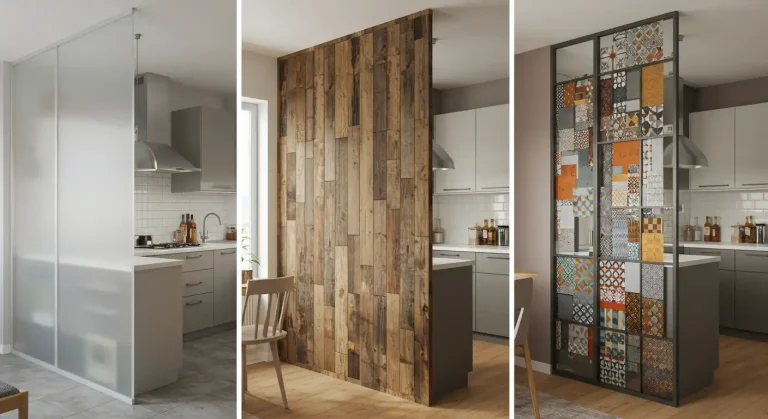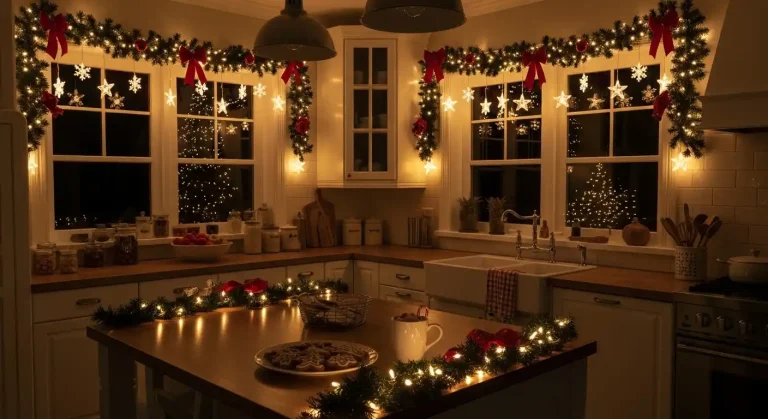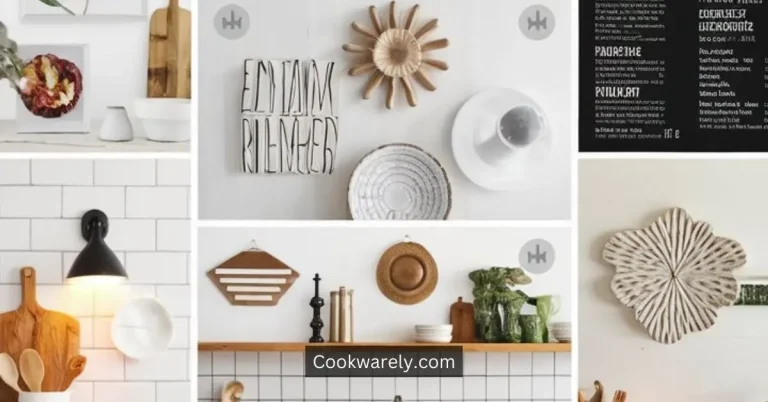Don’t Do It Wrong: 9 Open Shelving Kitchen Ideas That Work
Want to make your kitchen look stylish and practical? These open shelving kitchen ideas will help you show off your dishes and decor while keeping things organized.
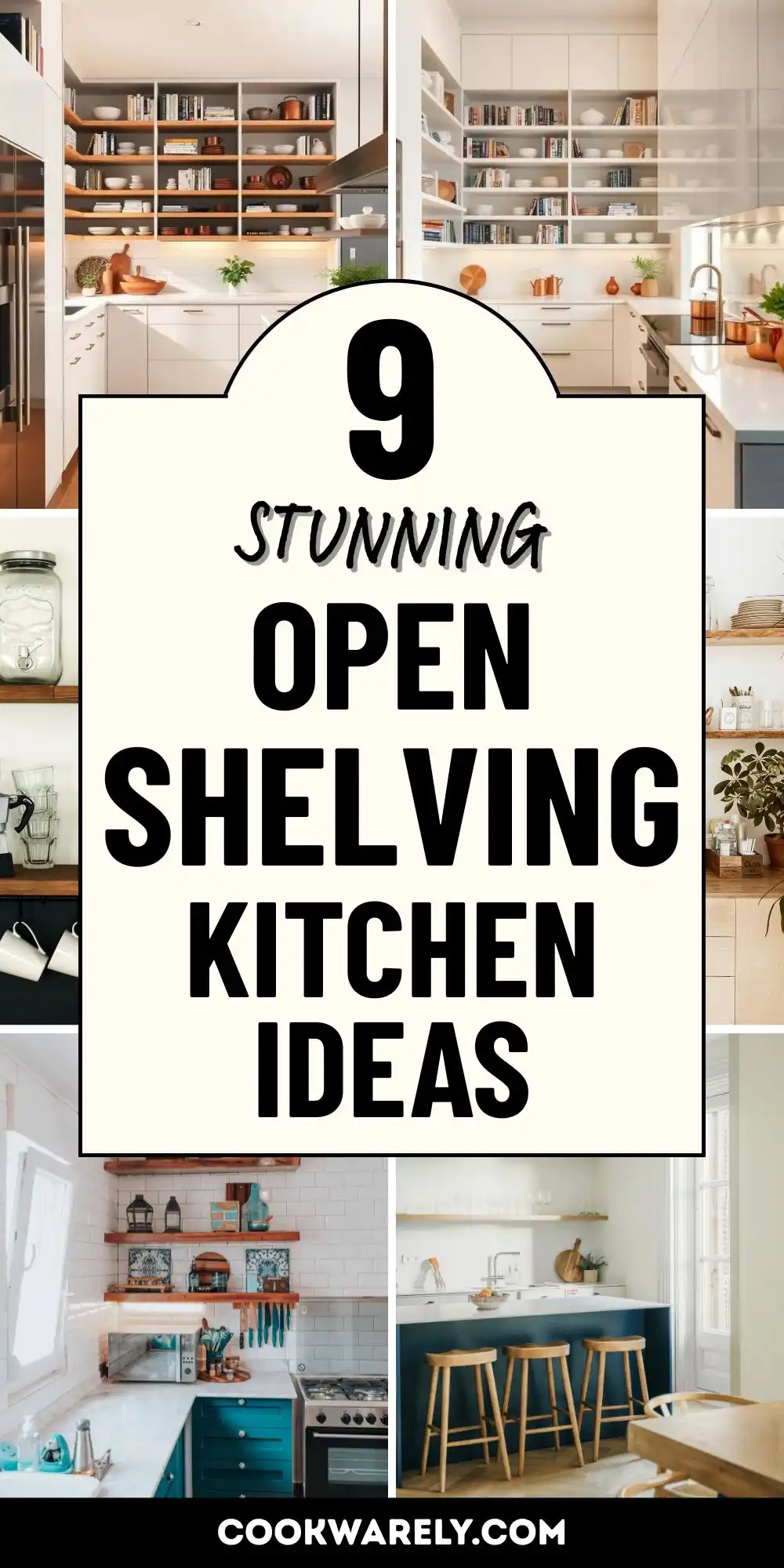
Open shelving is a hot trend in kitchen design, and for good reason!
It’s a stylish way to show off your favorite dishes, add personality, and make your kitchen feel bigger and brighter.
Unlike bulky cabinets, open shelves create an airy, relaxed vibe while keeping everyday items within easy reach.
🎄 Christmas & Year-End Amazon Deals !
Don’t miss out on the best discounts and top-rated products available right now!
*As an Amazon Associate, I earn from qualifying purchases.
But how do you make them look good and stay organized?
Whether you’re a fan of modern minimalism or cozy farmhouse charm, there’s an open shelving idea for you.
Why Open Shelving Works in Today’s Kitchens
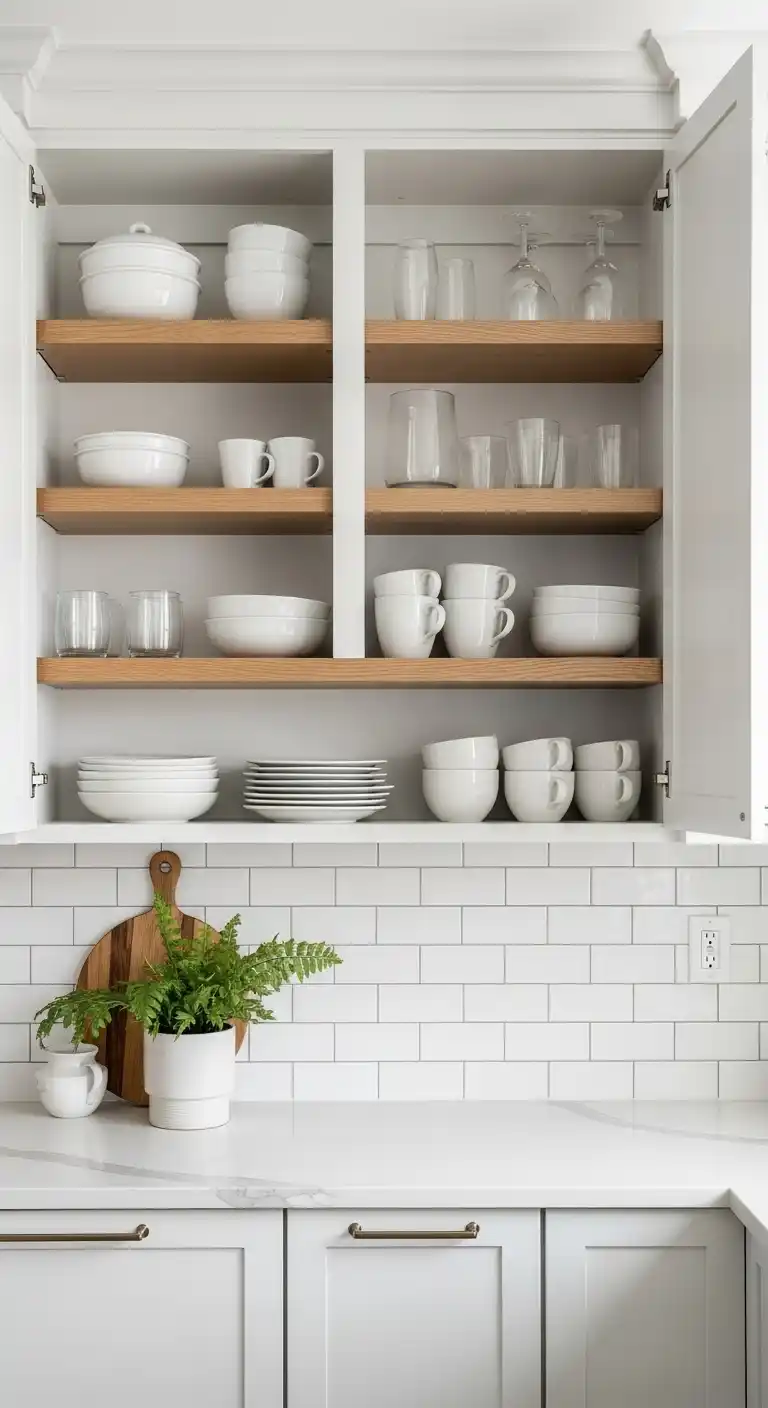
Open shelving is not just a trend—it’s a design choice that brings personality, practicality, and visual lightness to your kitchen.
Whether you’re working with a small space or simply want to show off your favorite dishware, open shelves can work wonders.
But before you grab a drill and start unscrewing your upper cabinets, there’s more to consider.
From layout and material choice to balance and styling, open shelving has its own set of rules—and endless creative potential.
Before You Style: What to Know About Open Shelving
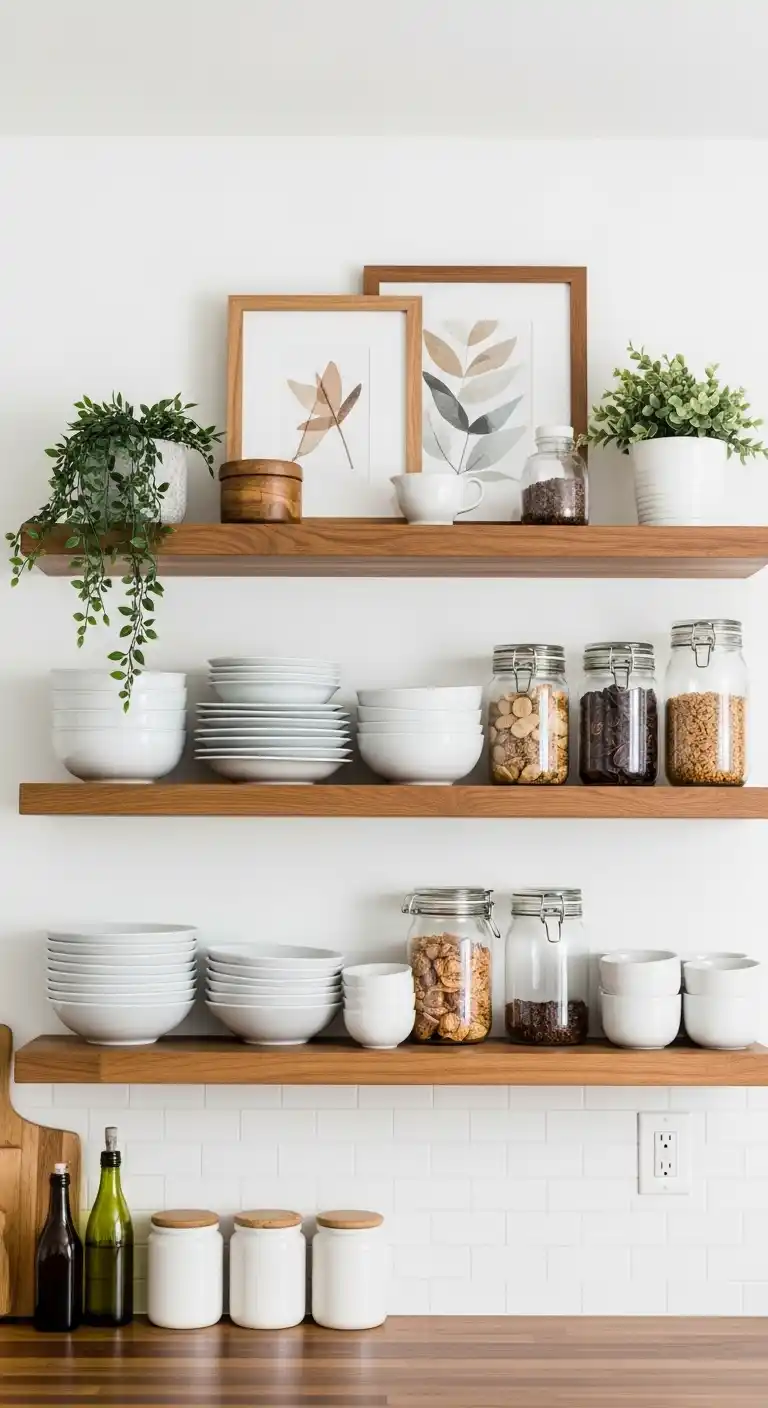
Before we dig into the stunning ideas, it’s helpful to understand what makes open shelving effective and stylish—not cluttered or chaotic.
Keep these essentials in mind:
- Purpose over Pinterest: Think about how you use your kitchen daily. Do you want decorative shelves or functional storage? The answer affects your styling choices.
- Weight distribution matters: Always check the wall structure and use appropriate anchors, especially for heavier items like ceramics or glass jars.
- Balance is key: Too much on open shelves can look messy. A mix of practical items and decor (like plants or artwork) creates visual interest without overload.
Innovative Open Shelving Kitchen Ideas for a Modern Look
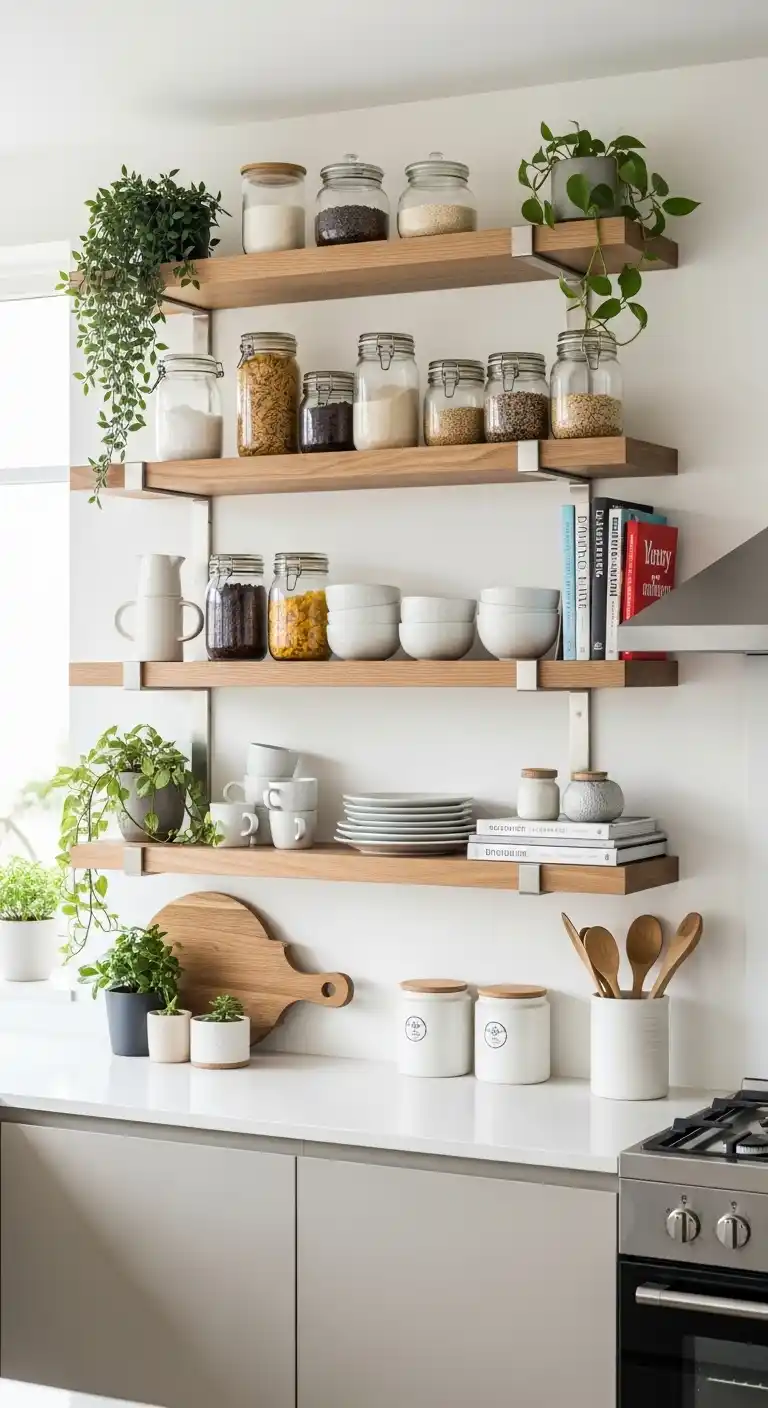
Open shelving works in kitchens big or small, creating an airy feel without sacrificing storage.
In this article, we’ll share 9 open shelving kitchen ideas that truly work, giving you inspiration to transform your kitchen into both a practical and beautiful space.
1. Go Natural with Wooden Shelves
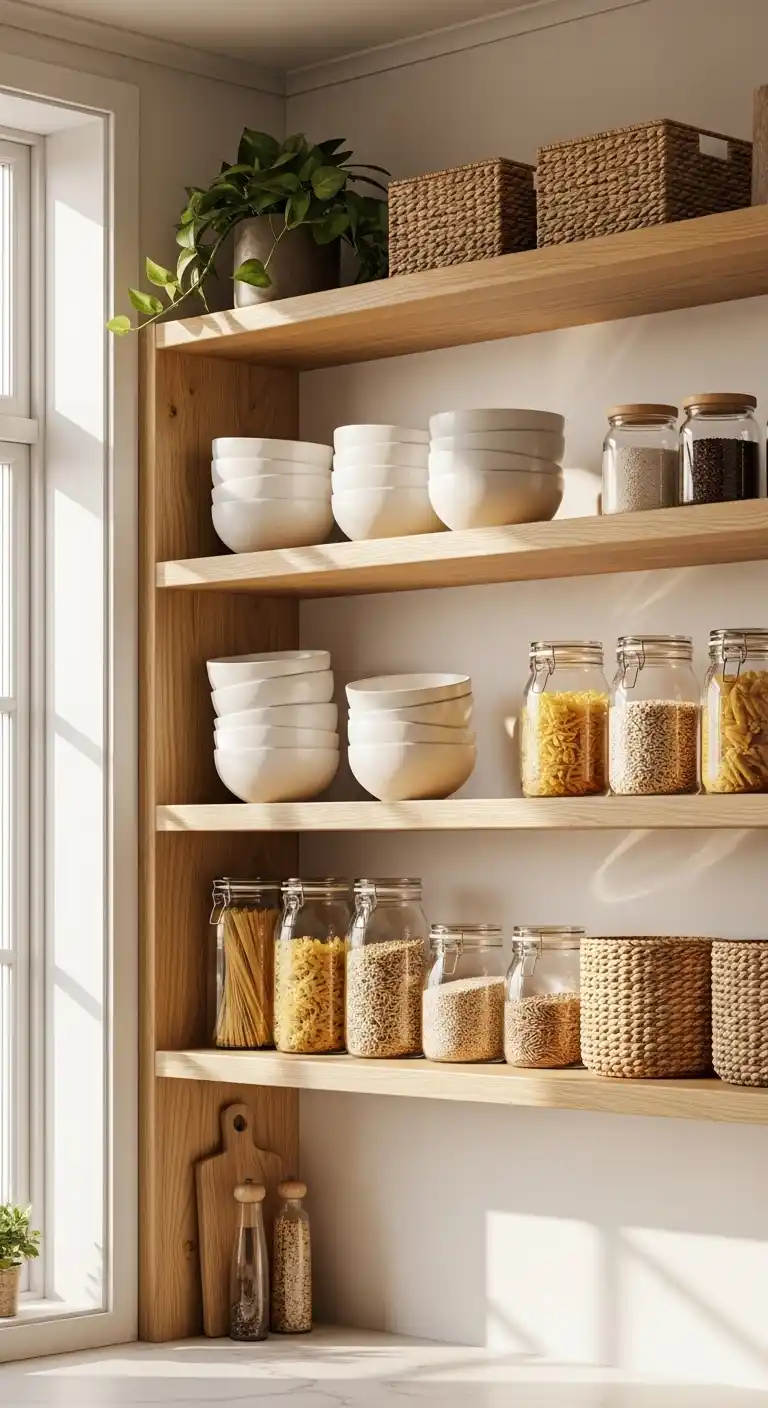
Wooden shelves are a timeless choice for open shelving.
They add warmth and texture, making your kitchen feel inviting.
Choose light woods like pine or oak for a Scandinavian look, or try darker stains like walnut for a rustic vibe.
To keep things from looking cluttered, style shelves with a mix of practical items (like bowls or mugs) and decor (think small plants or vintage cookbooks).
🎄 Christmas & Year-End Amazon Deals !
Don’t miss out on the best discounts and top-rated products available right now!
*As an Amazon Associate, I earn from qualifying purchases.

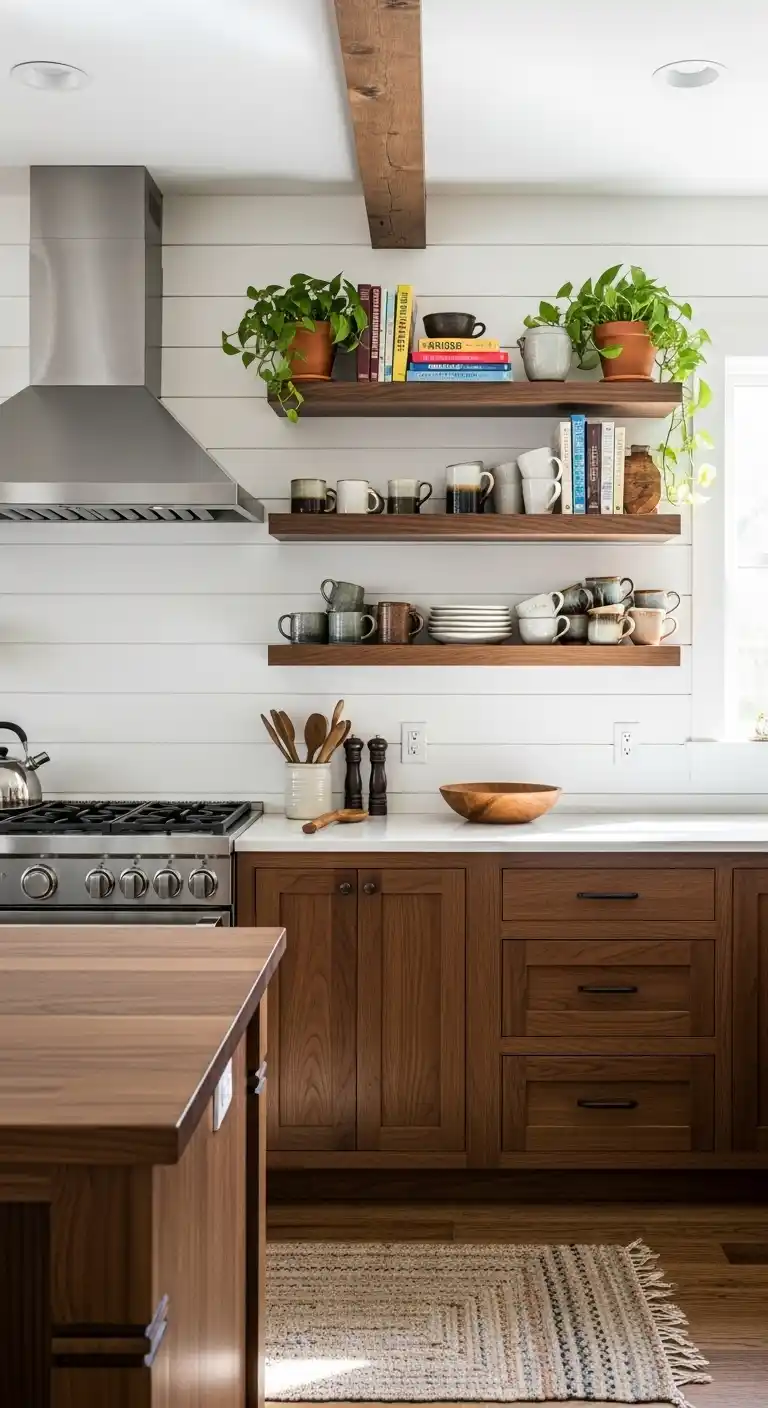
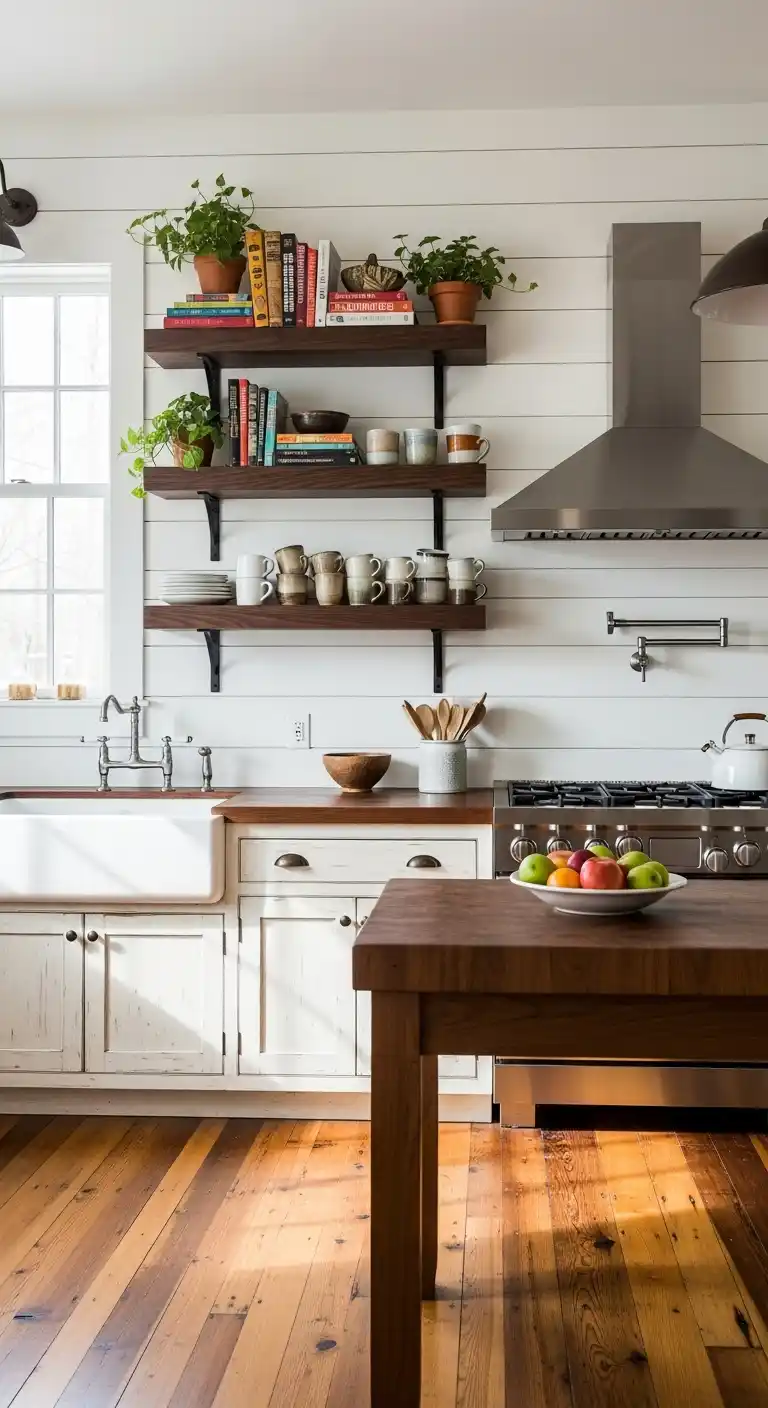
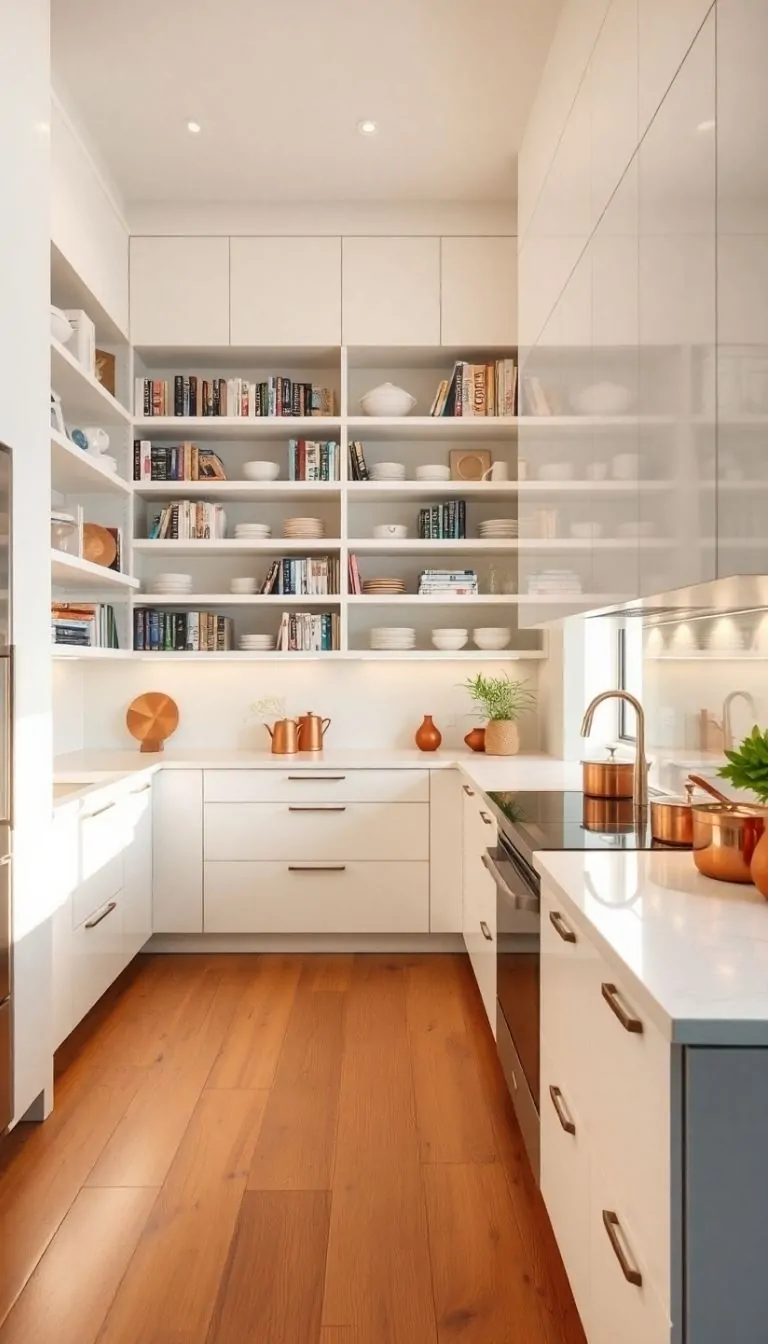
Pro tip: Leave some empty space between items so the shelves don’t feel overcrowded.
If you’re worried about dust, stick to items you use daily—they’ll get cleaned more often!
2. Mix Materials for Visual Interest
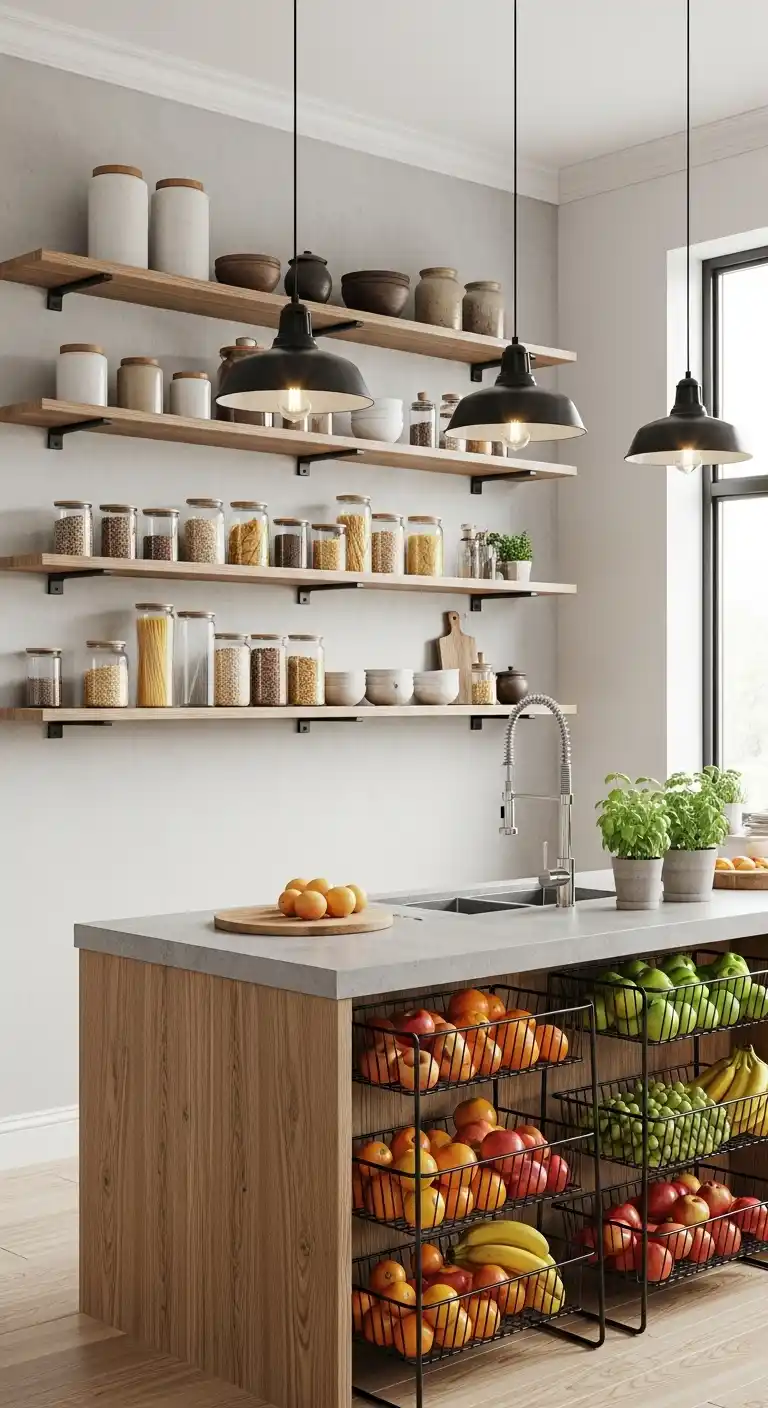
Don’t be afraid to combine different materials!
Pair wooden shelves with metal brackets for an industrial edge, or try floating glass shelves for a sleek, modern twist.
Mixing materials adds depth to your kitchen’s design.
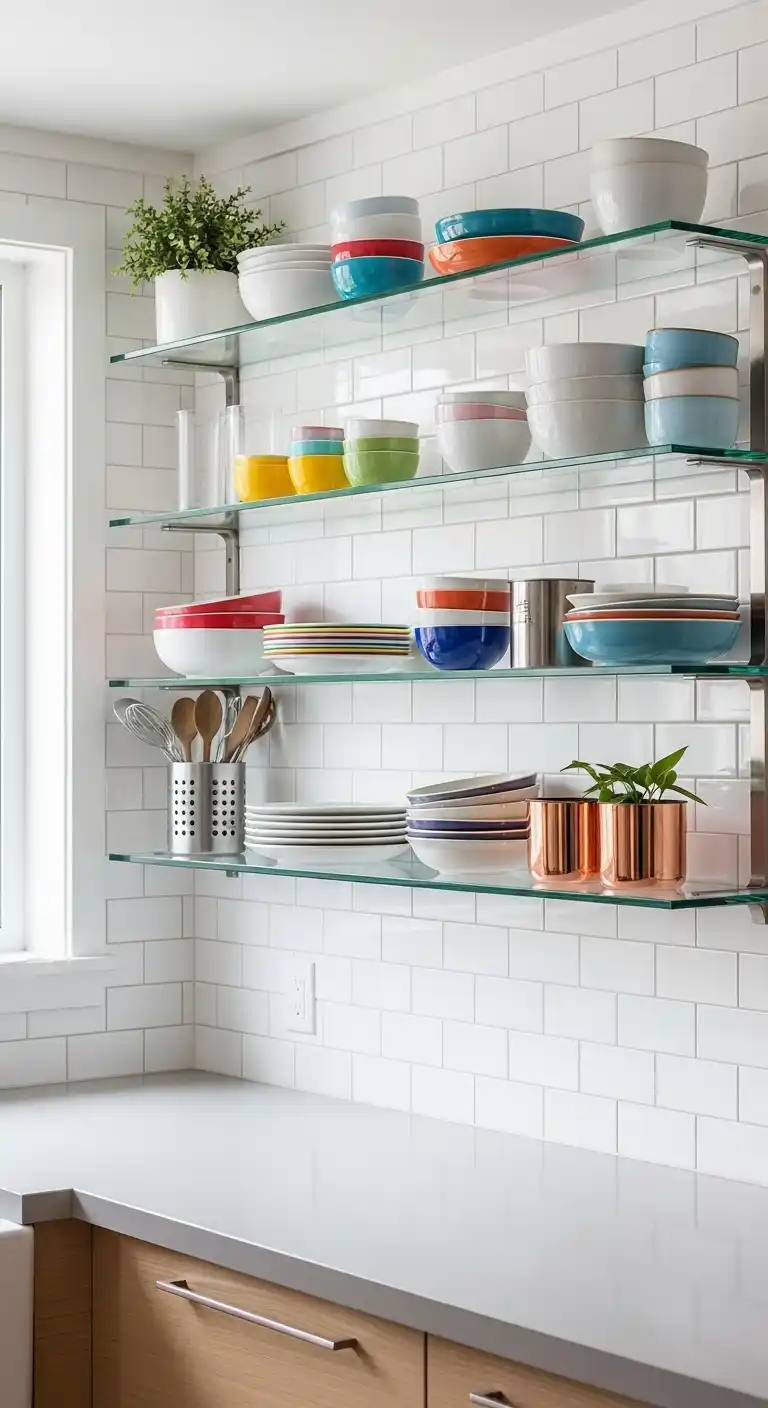

For example, metal baskets on a wooden shelf can hold fruits or kitchen towels, while ceramic jars add a pop of color.
Just make sure the materials complement your kitchen’s overall style.
Too many textures can look messy, so stick to 2-3 materials max.
3. Paint Shelves Bold Colors
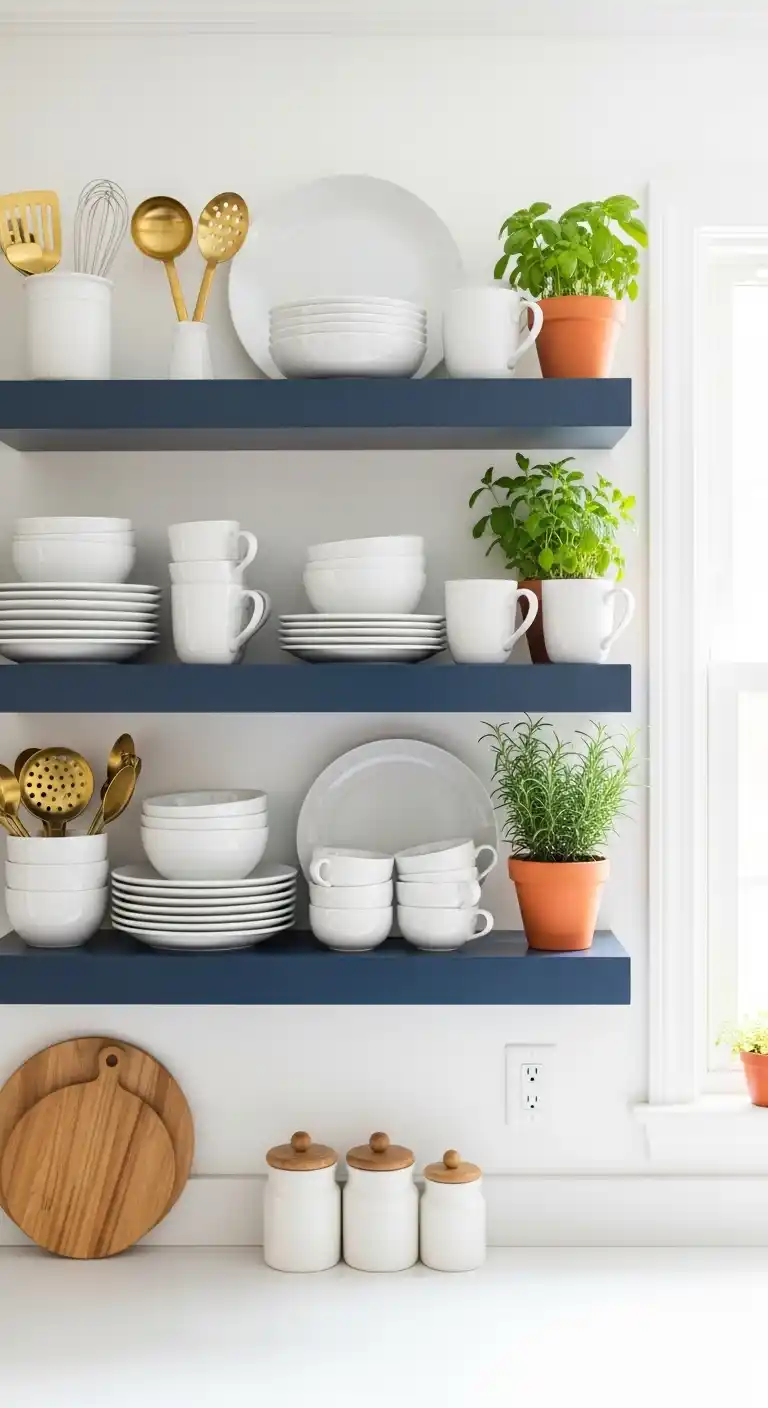
Who says shelves have to be neutral?
Painting them a bold color like navy blue, emerald green, or even sunshine yellow can turn them into a focal point.
Match the shelf color to your kitchen’s accent wall or dishes for a cohesive look.
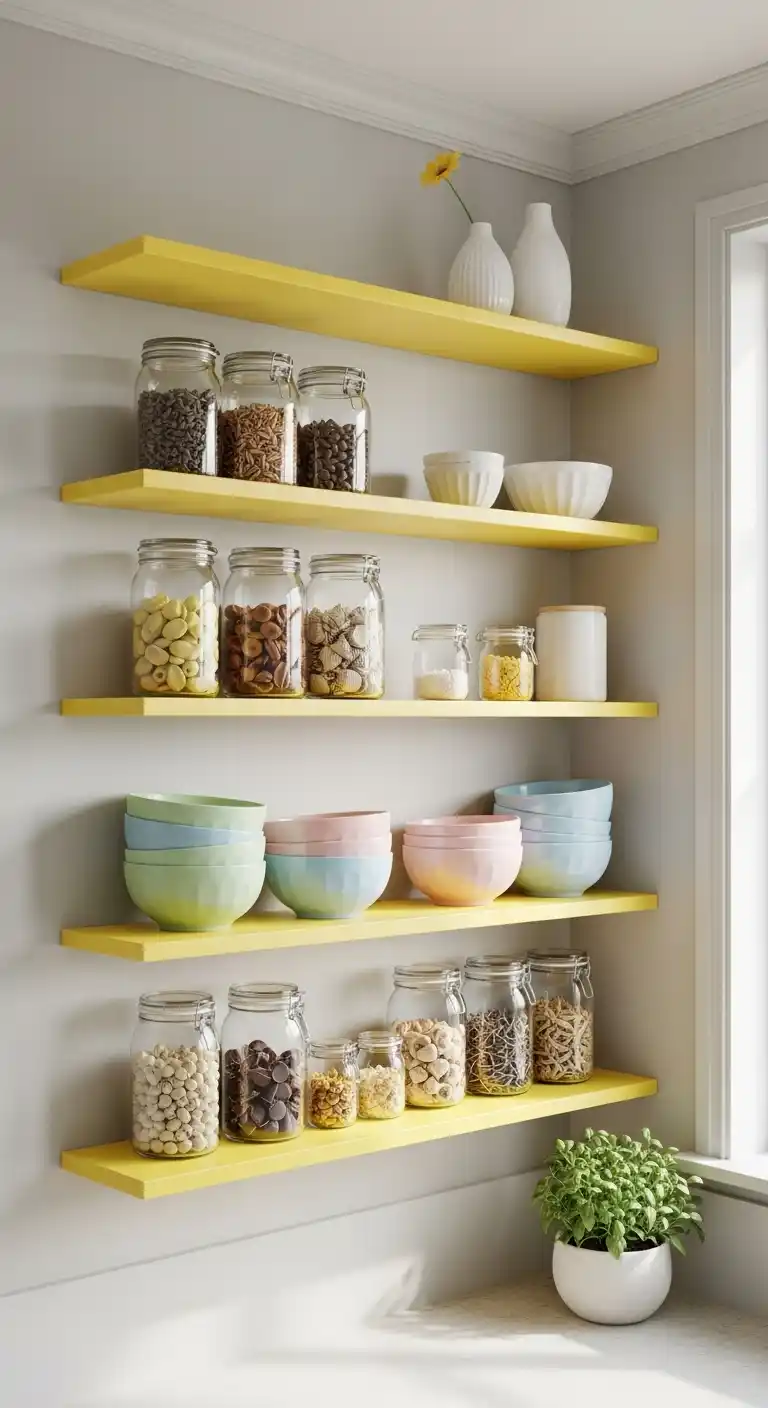
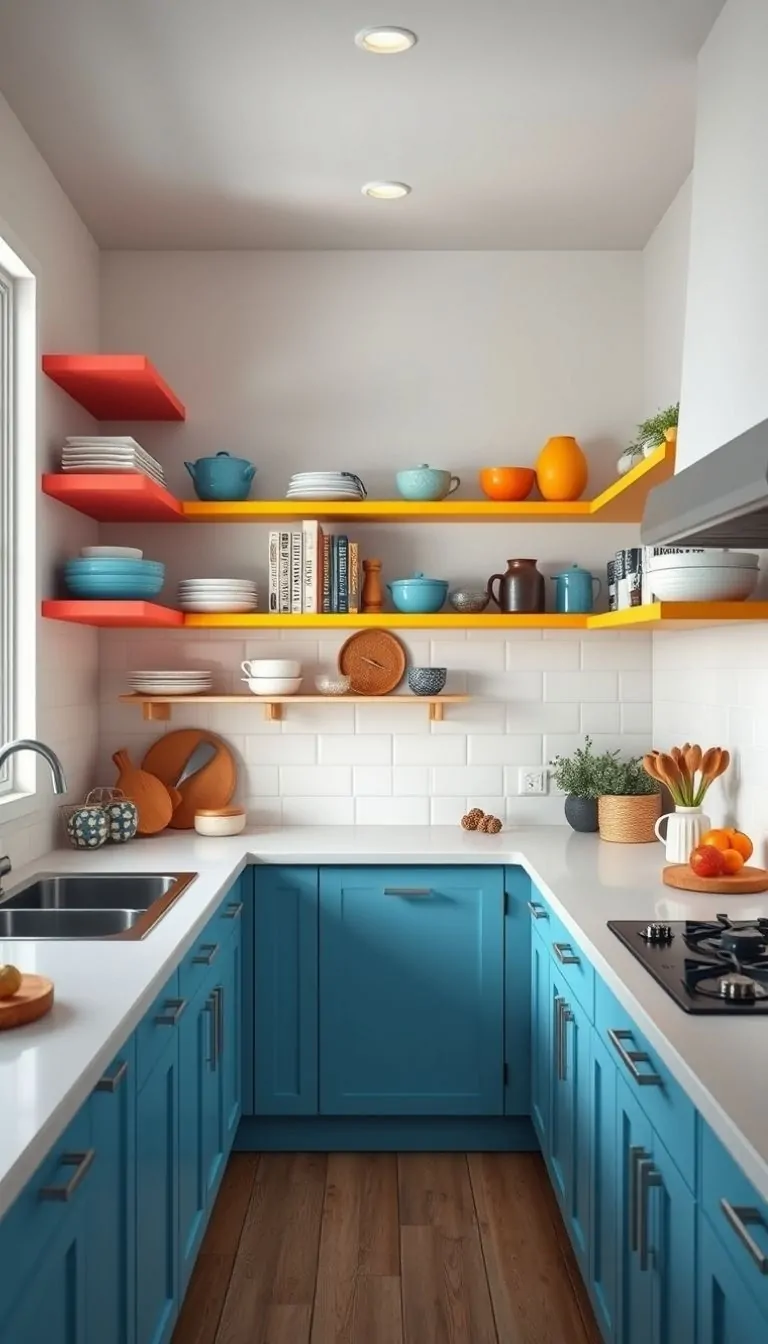
For small kitchens, lighter pastels (like mint or blush) keep things airy.
🎄 Christmas & Year-End Amazon Deals !
Don’t miss out on the best discounts and top-rated products available right now!
*As an Amazon Associate, I earn from qualifying purchases.
Just remember: Bold shelves work best with simple, matching items.
Avoid cluttering them with too many colorful pieces—let the shelves steal the show!
4. Use Shelves to Display Greenery
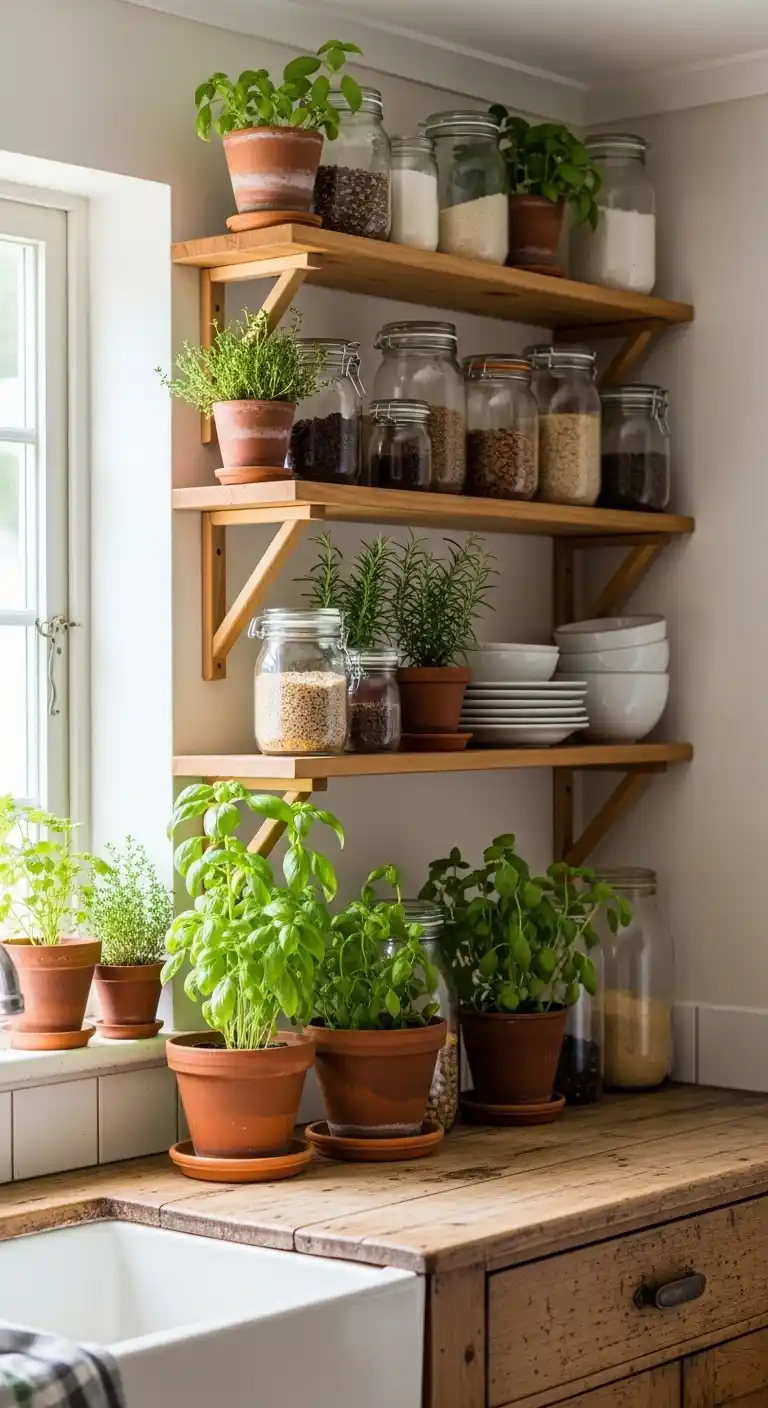
Plants breathe life into any space, and your kitchen is no exception!
Use open shelves to showcase small potted herbs, succulents, or trailing ivy.
Not only do they look fresh, but herbs like basil or rosemary are handy for cooking.
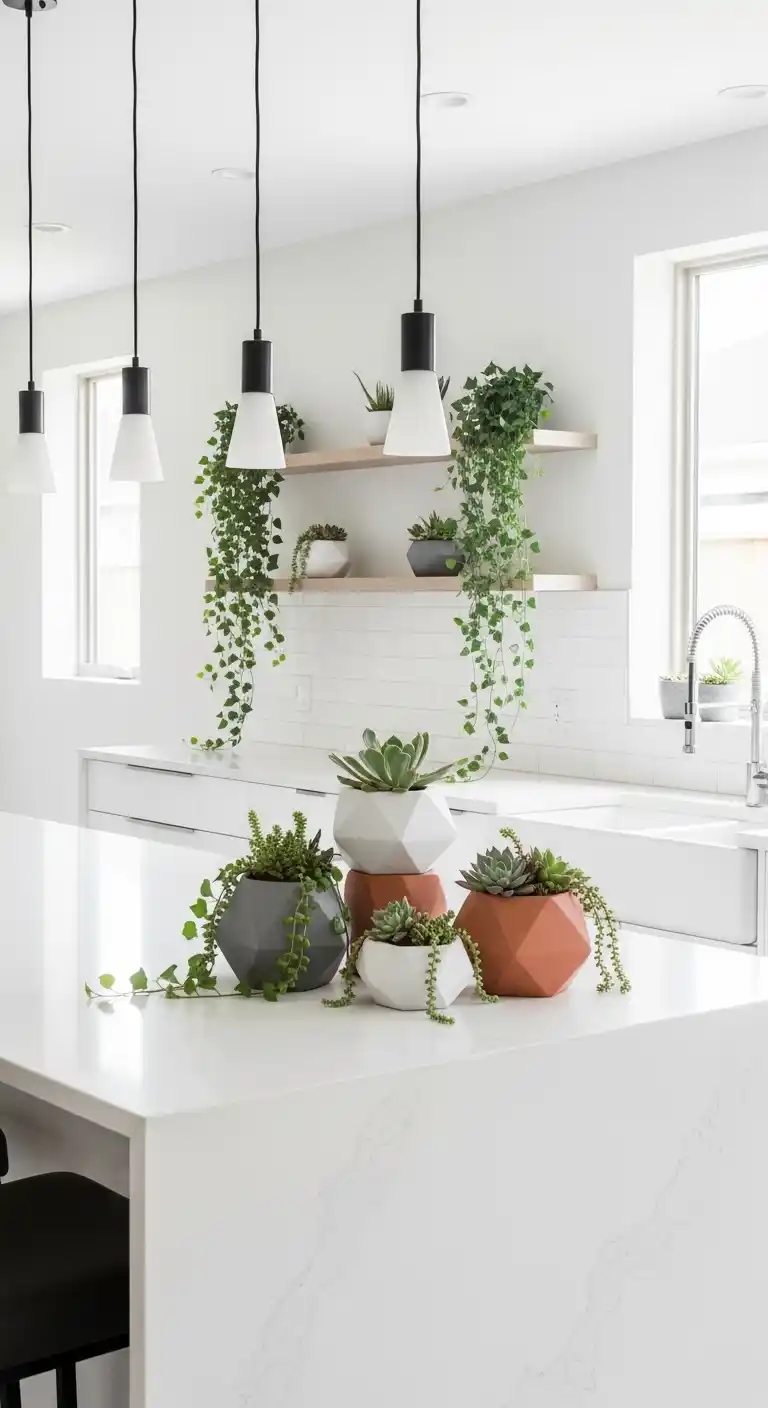
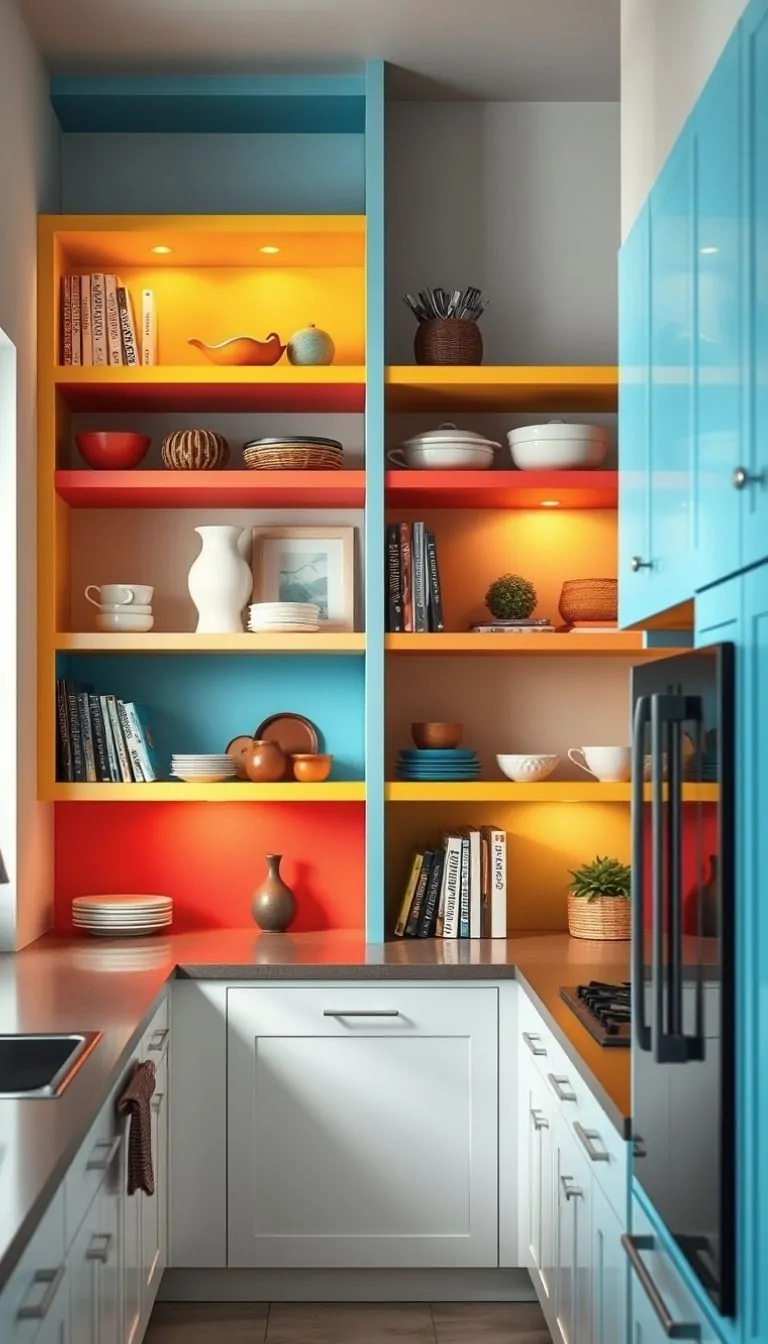
Use cute pots or hanging planters to add variety.
If you’re not great with plants, fake ones work too—just dust them weekly.
Place greenery at different heights for a lively, layered look.
5. Maximize Corners with L-Shaped Shelves
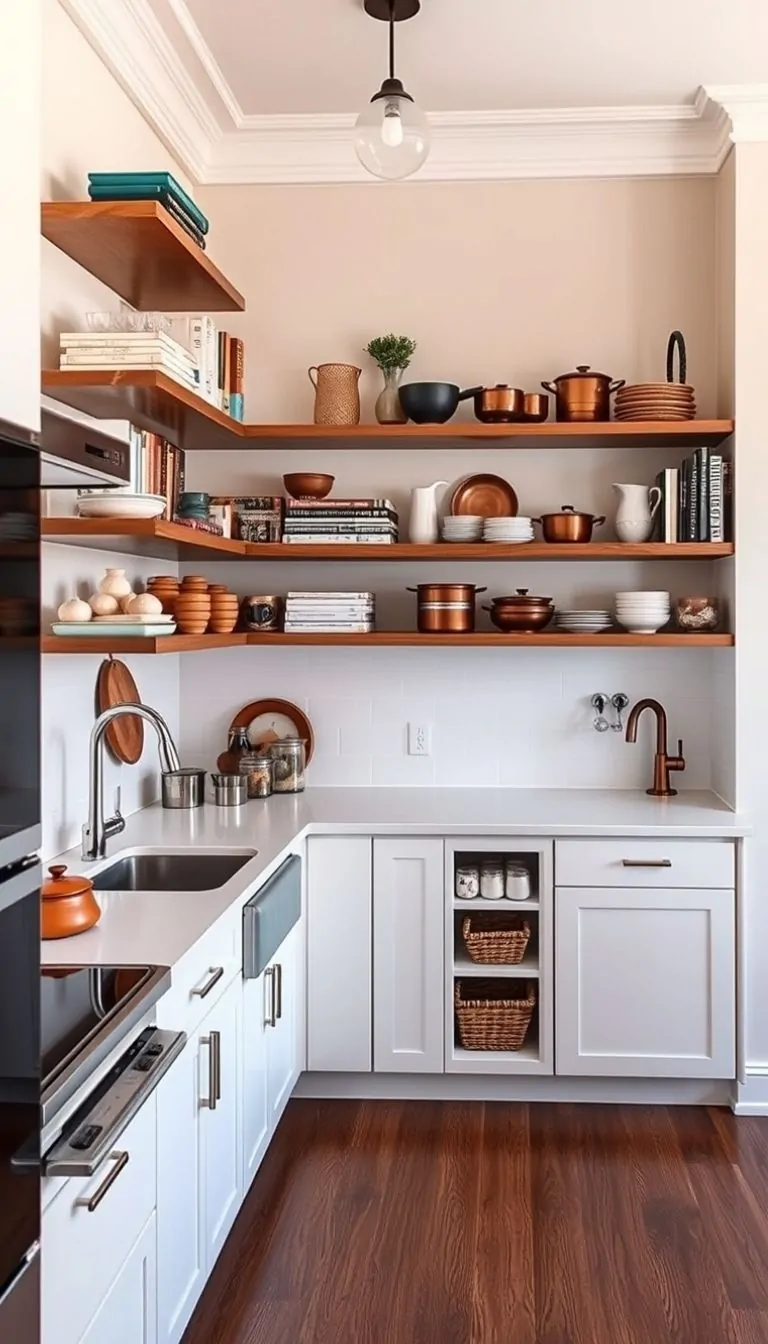
Corners often go unused, but L-shaped shelves can transform them into storage stars!
Install shelves in a corner to hold spices, cookbooks, or a coffee station.
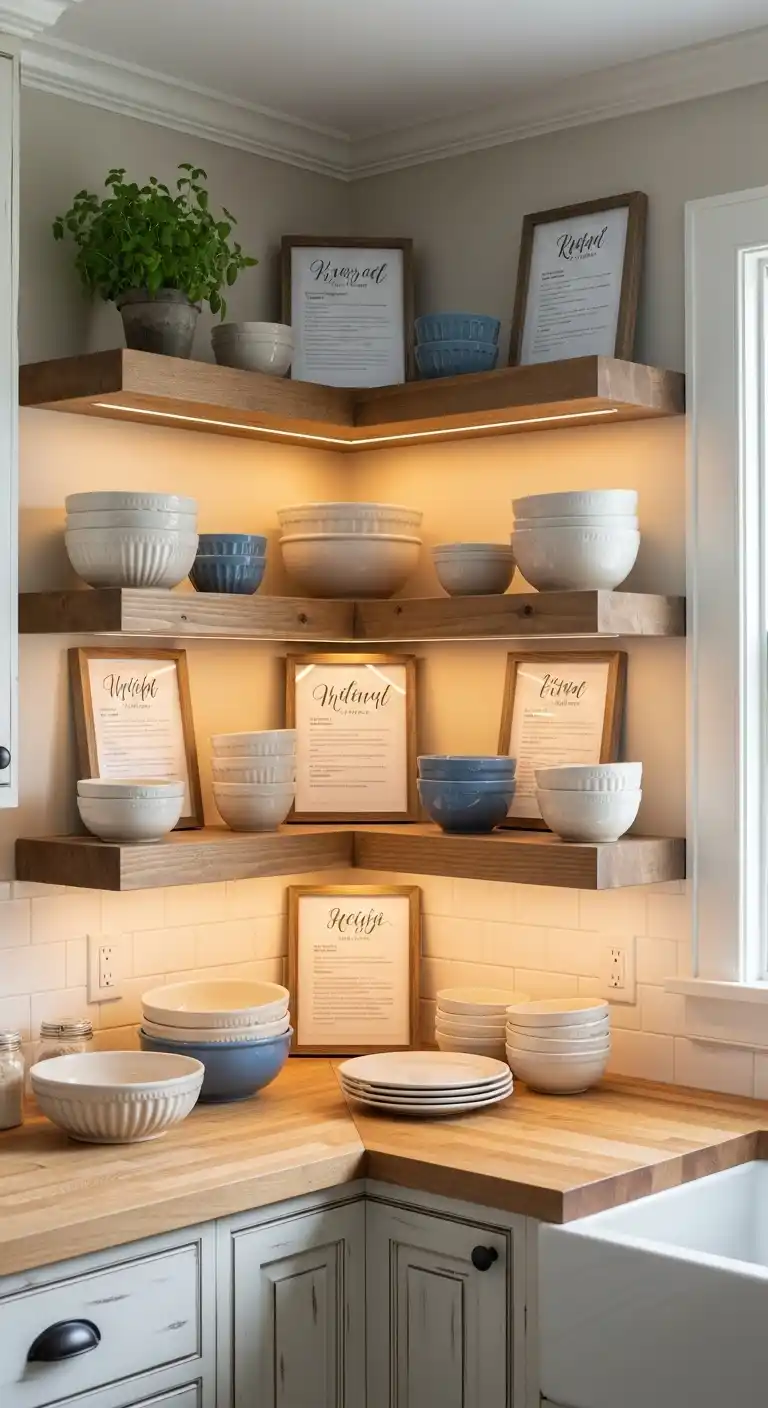
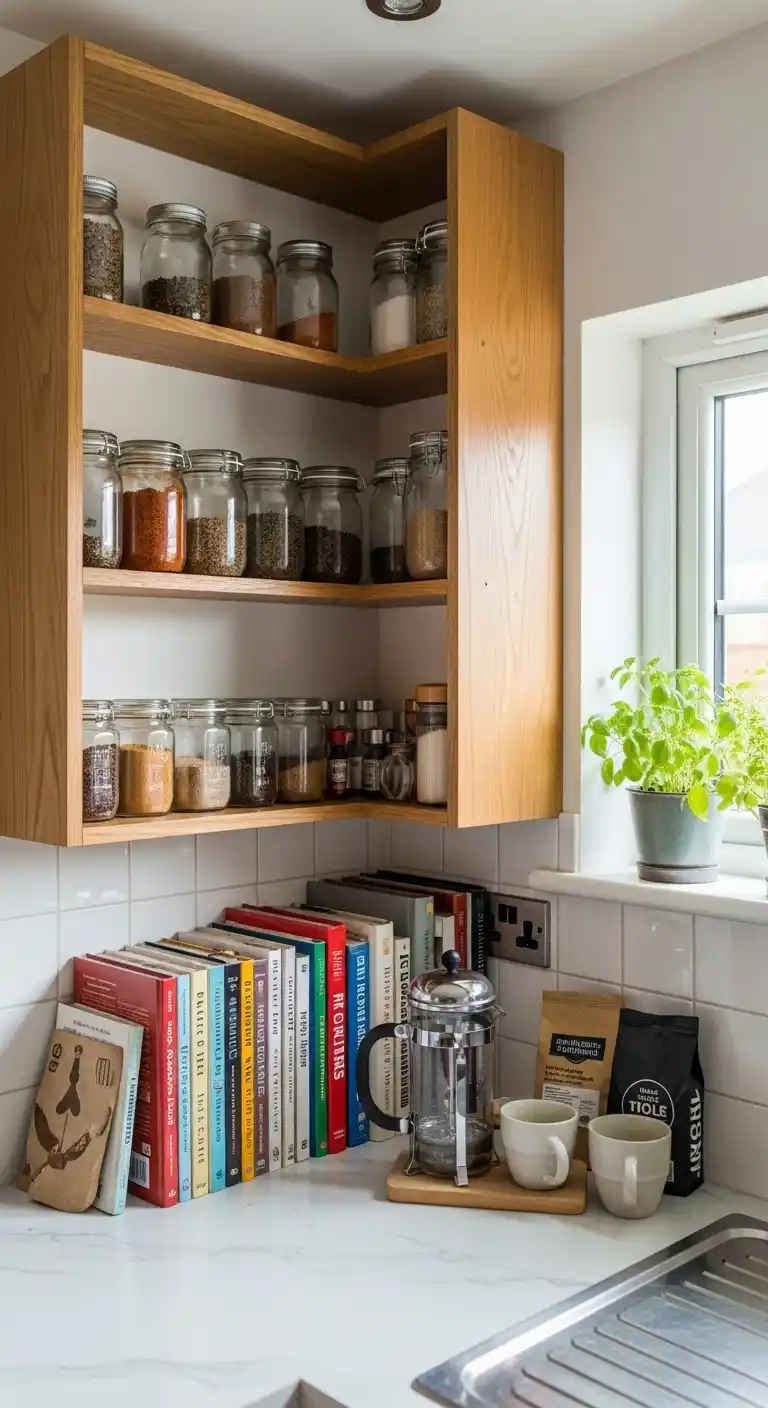
This setup is perfect for small kitchens because it uses “dead space” efficiently.
Style the shelves with a mix of functional items and decor—like a sleek kettle next to a framed recipe card.
🎄 Christmas & Year-End Amazon Deals !
Don’t miss out on the best discounts and top-rated products available right now!
*As an Amazon Associate, I earn from qualifying purchases.
For extra charm, add under-shelf lighting to brighten up the corner.
6. Float Shelves Above Windows
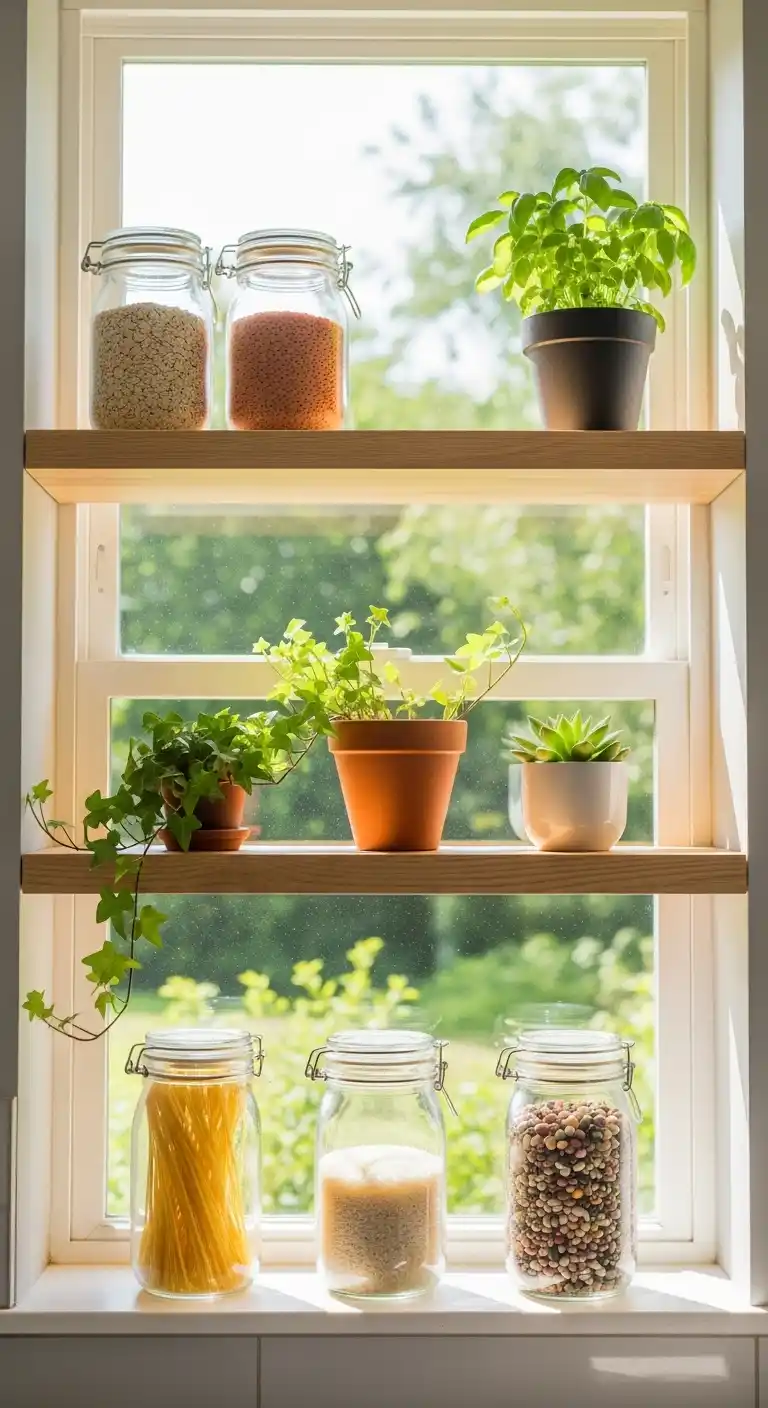
Got empty wall space above your kitchen window? Install a floating shelf there!
It’s a smart way to use vertical space without blocking natural light.
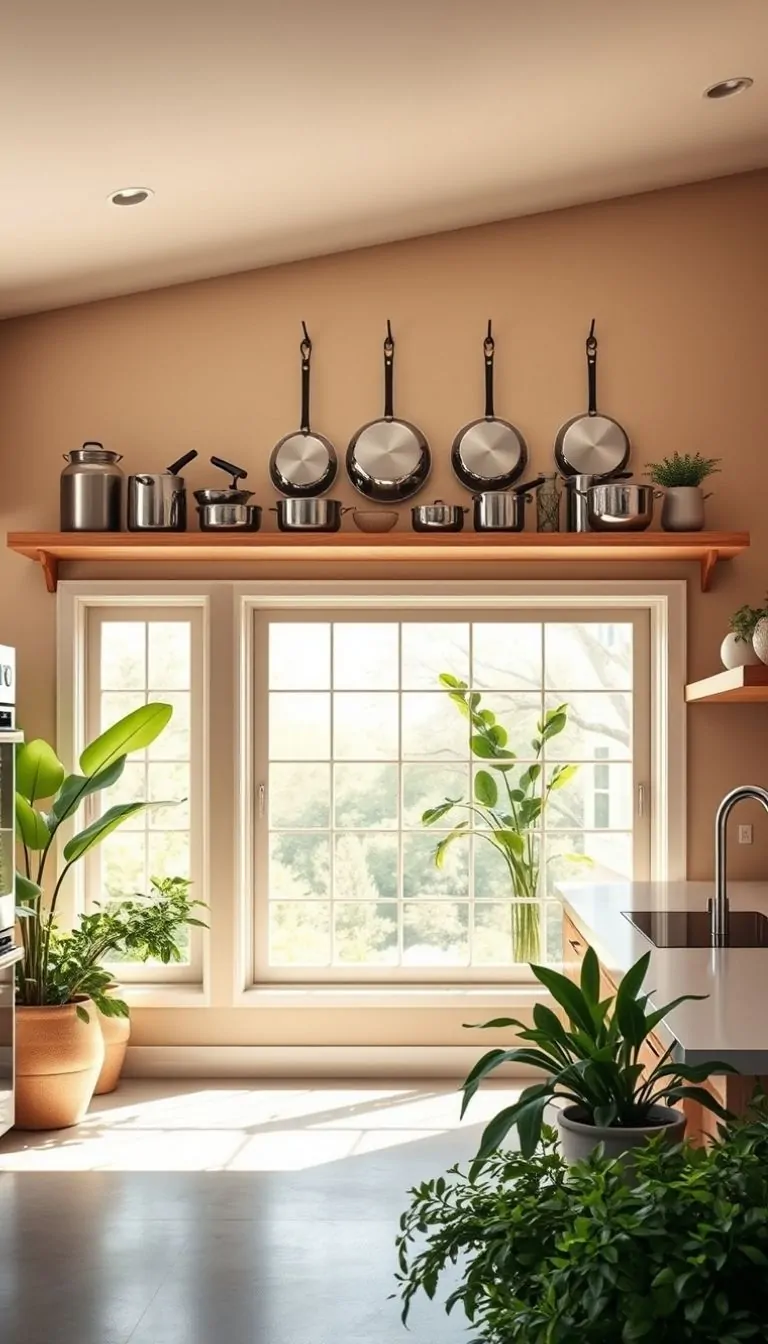
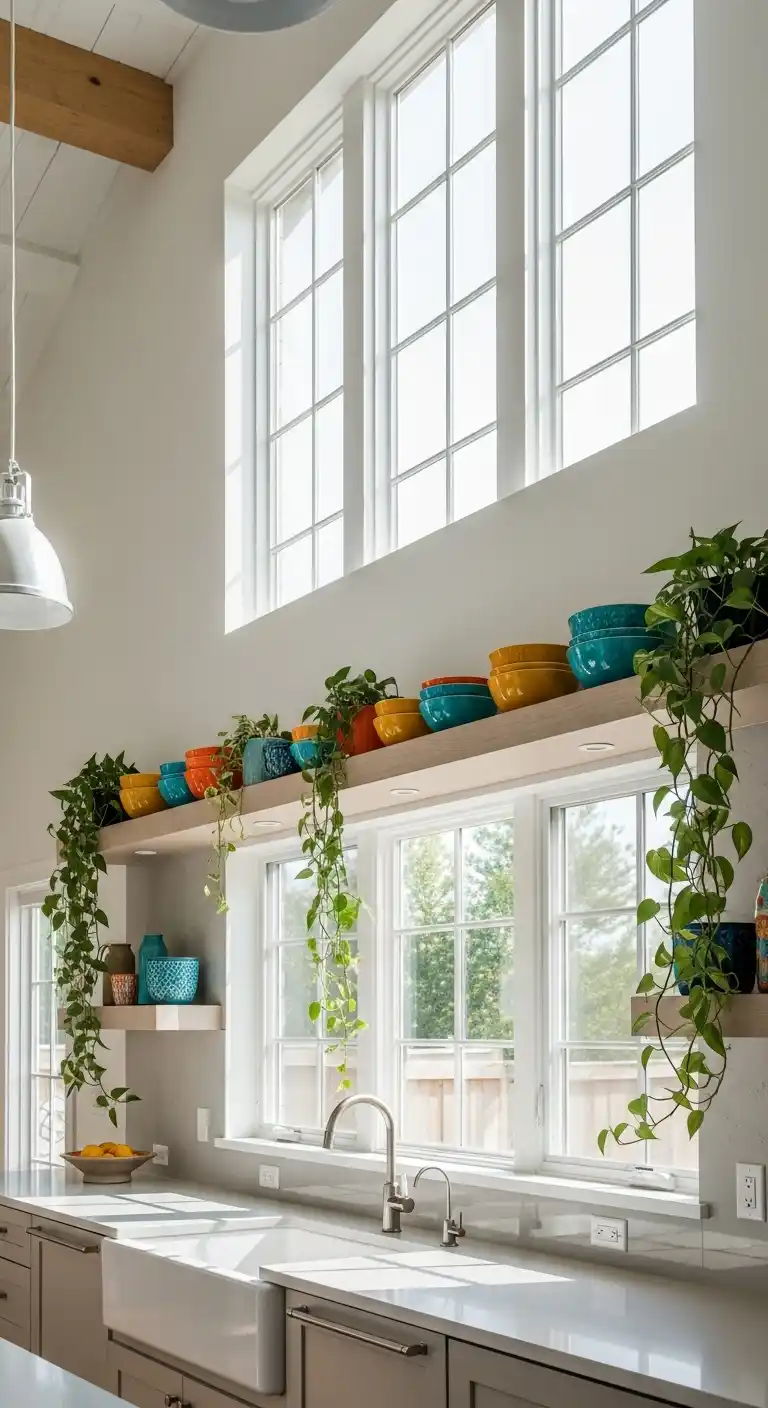
Style the shelf with lightweight items like glass jars, small plants, or decorative bowls.
Avoid heavy dishes—you don’t want anything falling!
This idea works especially well in kitchens with high ceilings, as it draws the eye upward and makes the room feel taller.
7. Hang Pots and Pans on Shelves
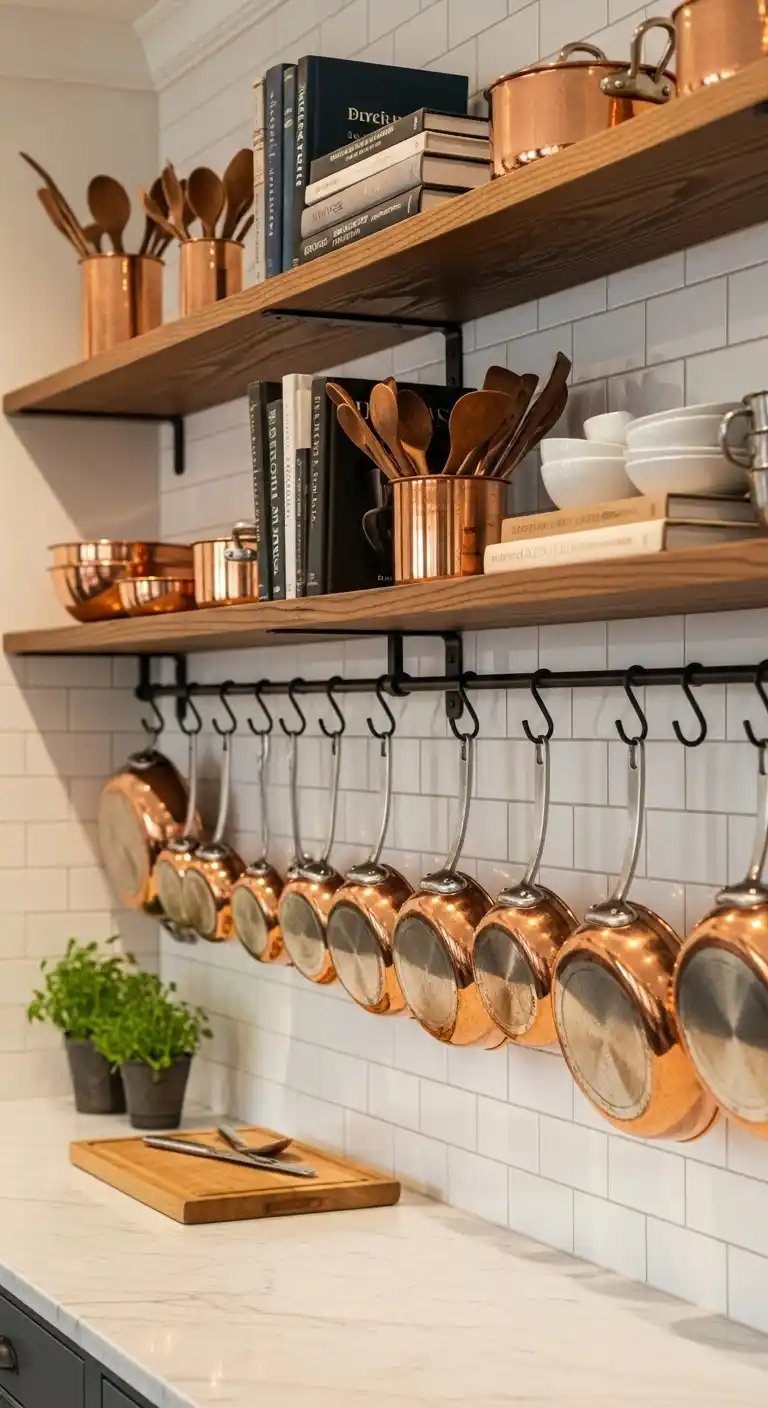
Turn your shelves into a practical display by hanging pots and pans below them!
Install hooks under sturdy wooden shelves to hold cookware.
This saves cabinet space and adds a chef-ready vibe. Keep the pots shiny and organized for a tidy look.
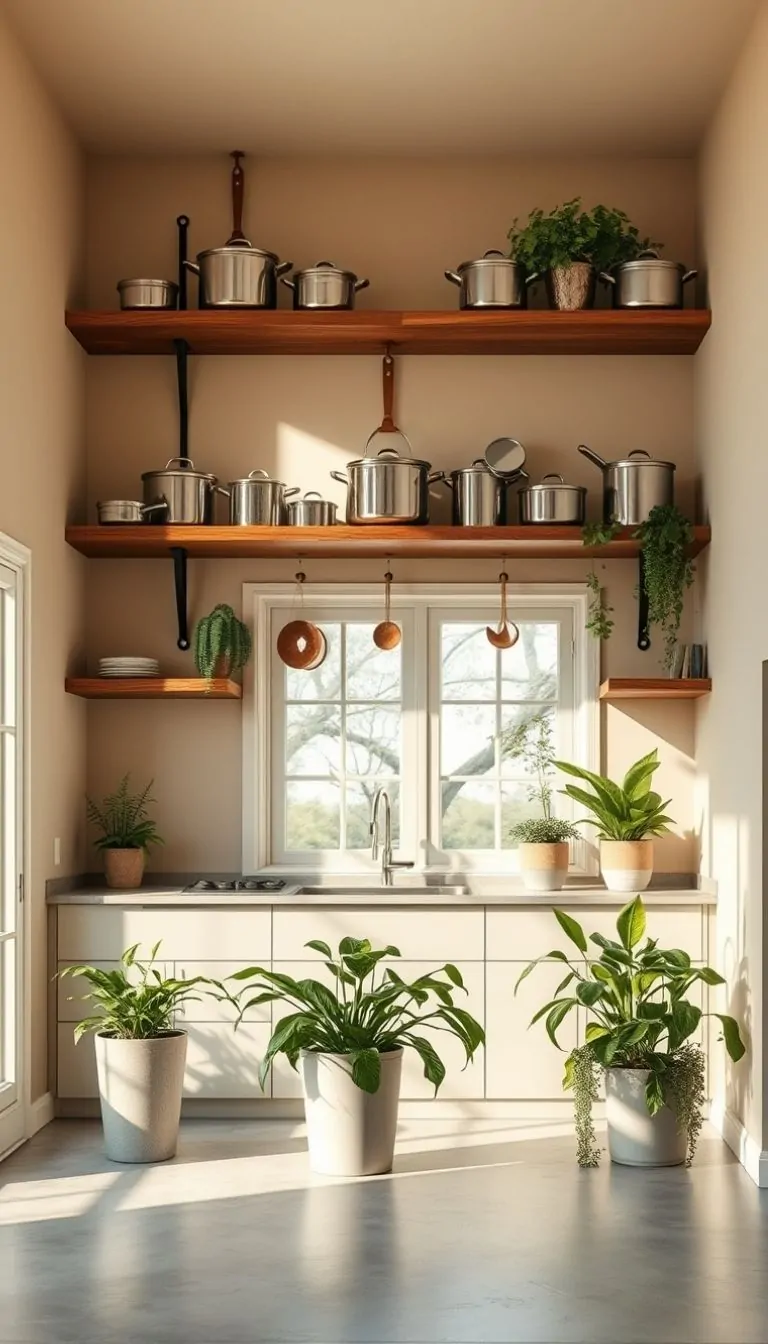

Pair this with open shelves holding matching utensils or oven mitts for a cohesive kitchen workspace.
Bonus: Everything you need is within arm’s reach while cooking!
8. Keep It Simple with Minimalist Shelves
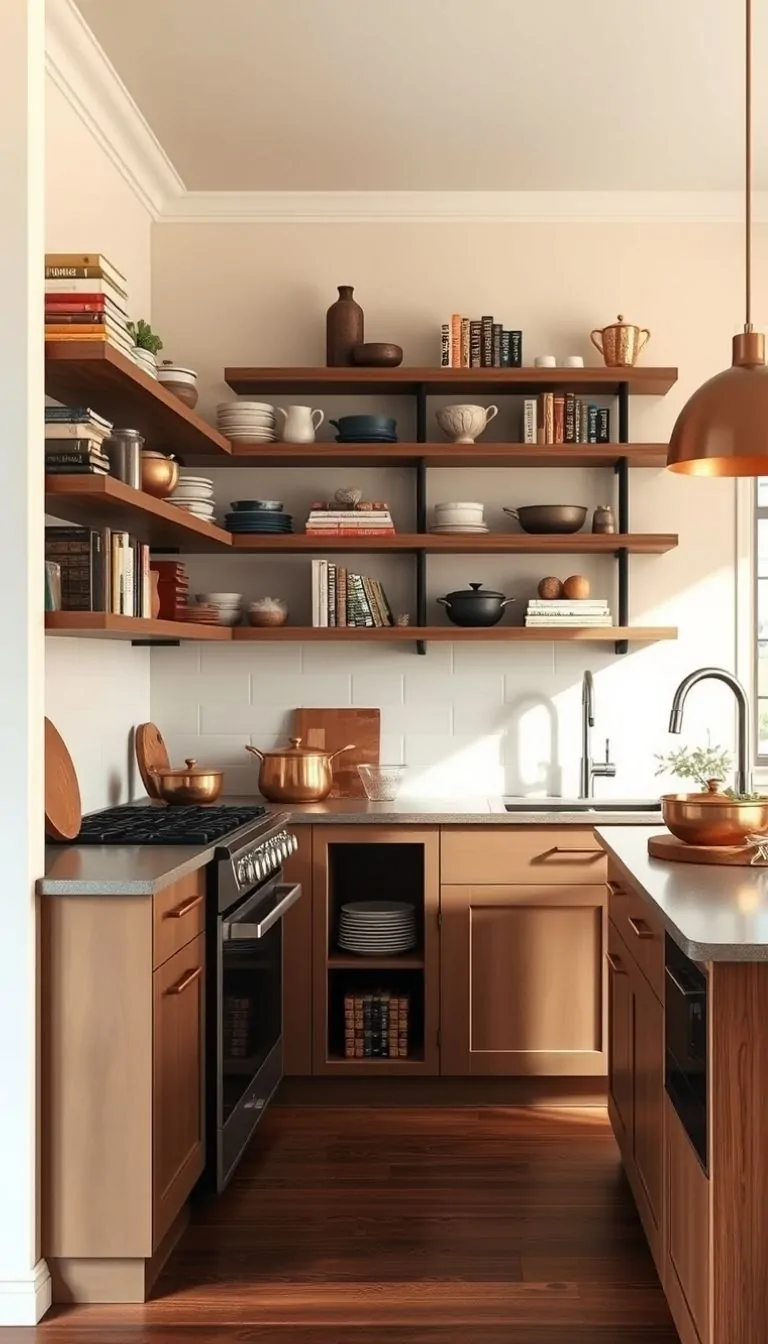
Less is more! For a clean, modern look, opt for thin, floating shelves in white or black.
🎄 Christmas & Year-End Amazon Deals !
Don’t miss out on the best discounts and top-rated products available right now!
*As an Amazon Associate, I earn from qualifying purchases.
Arrange a few matching dishes (like white plates or clear glasses) in neat stacks.
Leave plenty of empty space to highlight the simplicity.
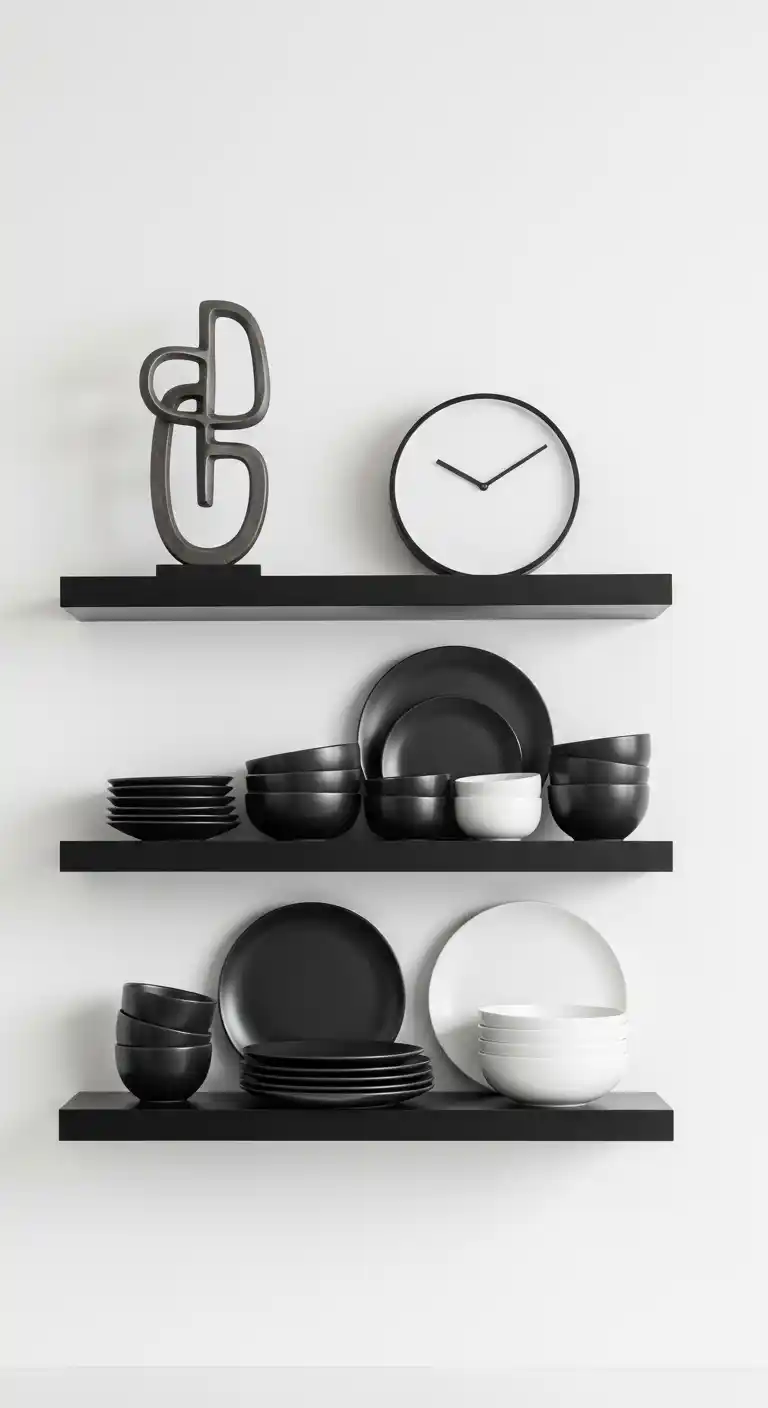

This style works best if you’re a neat freak—dust and clutter are easier to spot!
Add a single piece of decor, like a minimalist clock or a small sculpture, to keep things from feeling too bare.
9. Create a Theme for Seasonal Displays
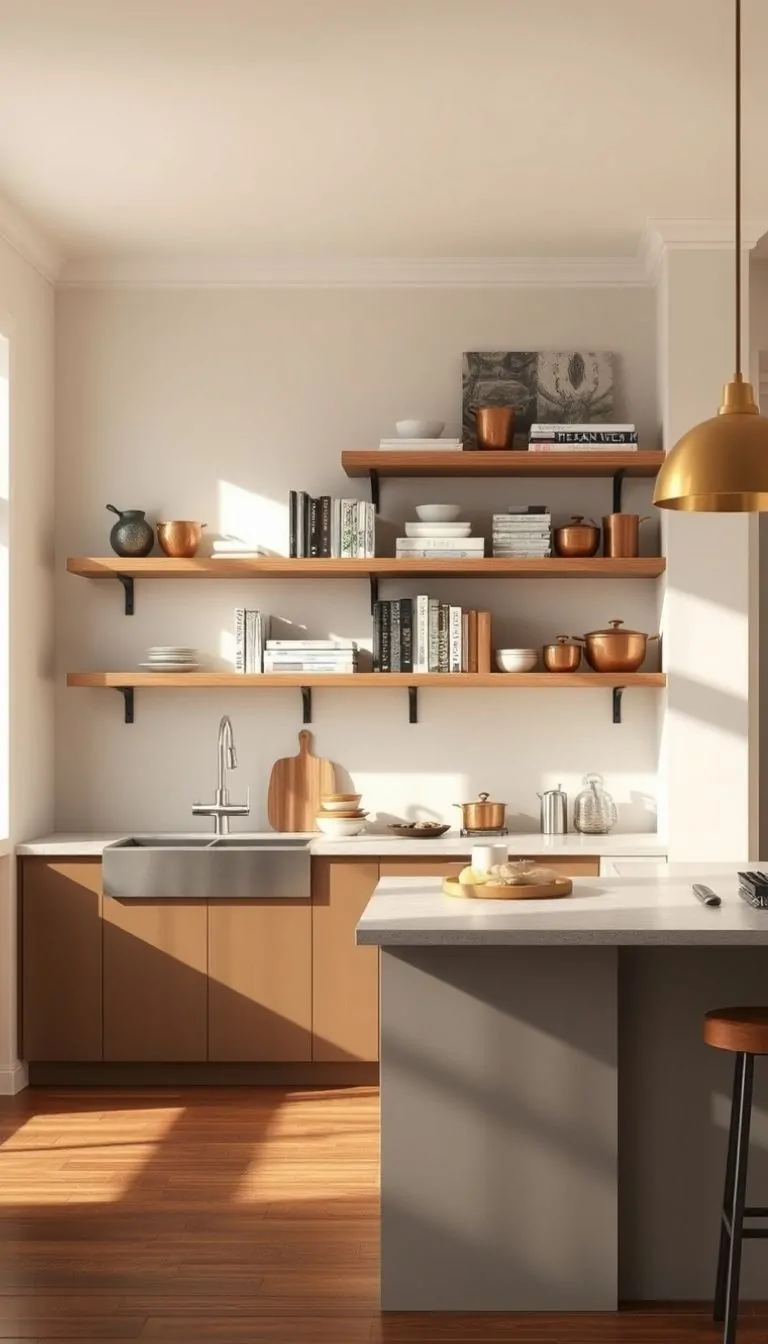
Switch up your shelves with the seasons or holidays!
In fall, style them with pumpkins, mason jars filled with cinnamon sticks, and warm-toned dishes.
For summer, use bright bowls, seashells, or citrus fruits as decor.
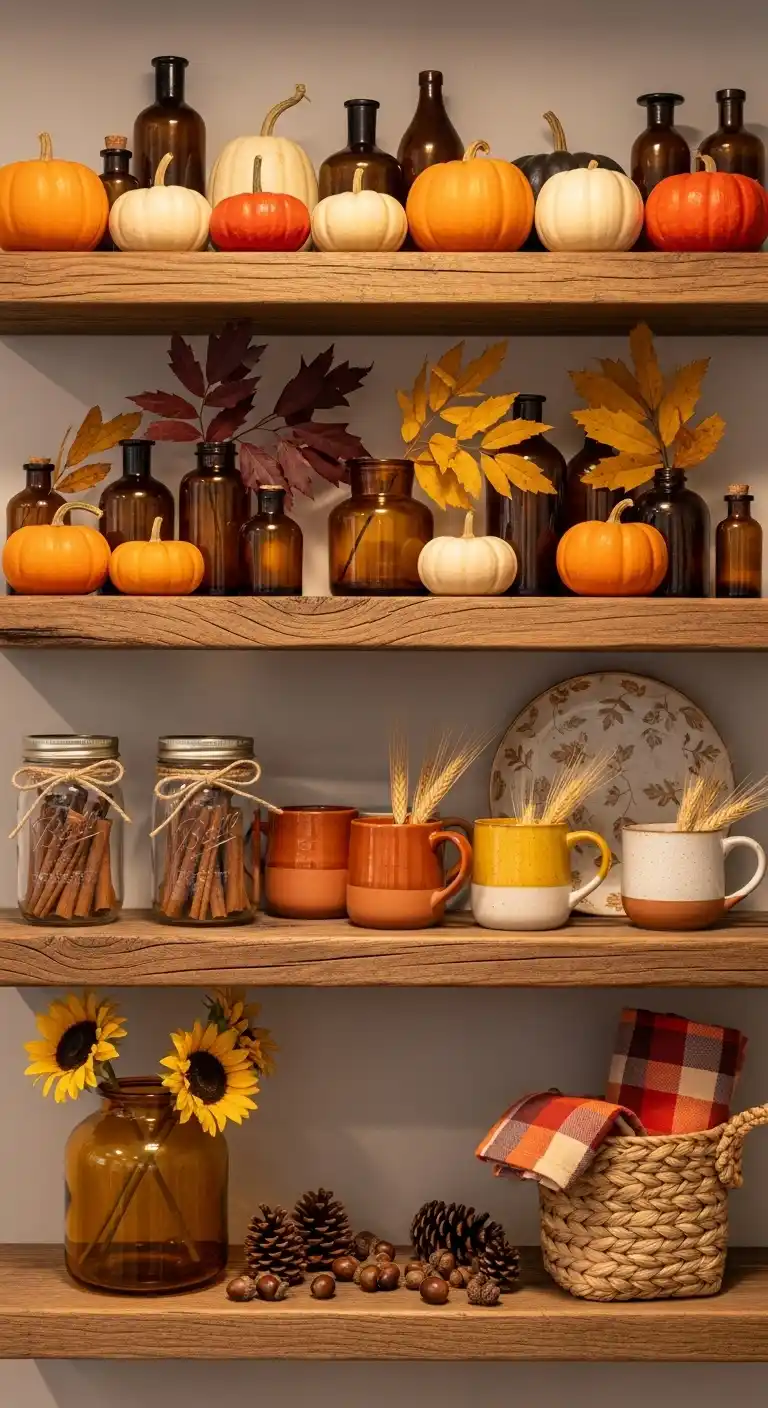
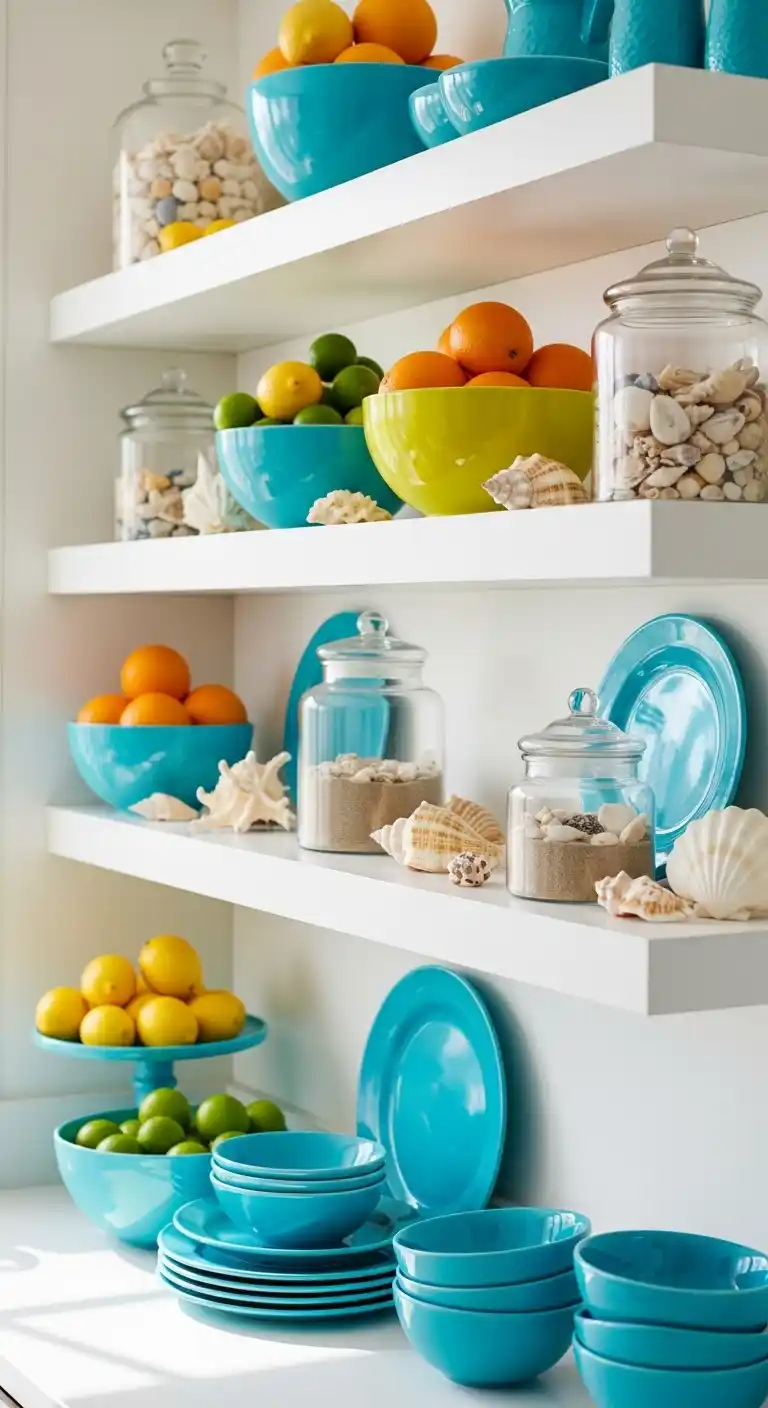
Themes make your kitchen feel festive without major renovations.
Store seasonal items in bins and rotate them every few months.
Kids can even help—it’s a fun way to get the whole family involved!
Tips for Making Open Shelves Work in Any Kitchen
- Start Small: If you’re nervous, try just one shelf above a coffee station or in a corner nook.
- Stick to a Color Scheme: Keep things cohesive by choosing dishes, bowls, and accessories in a similar palette.
- Use Everyday Items: Stack the plates you actually use. This keeps the space functional—not just photogenic.
- Mix Materials: Wood, metal brackets, or even glass can be combined for a layered look.
- Clean Regularly: Dust and grease can build up—especially near the stove. Make it a habit to wipe things down weekly.
Wrap-Up
Open shelving is all about blending style and function.
Whether you’re into bold colors, rustic wood, or sleek minimalism, there’s a way to make shelves work for your kitchen.
Remember to keep it organized, balance decor with everyday items, and have fun showing off your personality.
Actionable Takeaways:
🎄 Christmas & Year-End Amazon Deals !
Don’t miss out on the best discounts and top-rated products available right now!
*As an Amazon Associate, I earn from qualifying purchases.
- Choose shelves that fit your kitchen’s structure and aesthetic.
- Combine open and closed storage for the best of both worlds.
- Use a curated mix of daily-use items and decorative pieces.
- Keep it clean—visually and literally.
FAQs About Open Shelving Kitchens
Q: Will open shelving make my kitchen look cluttered?
A: Not if you edit what you display. Stick to matching sets, neutral tones, and everyday items for a clean look.
Q: Are open shelves practical for small kitchens?
A: Absolutely. They can make small spaces feel more open and reduce visual bulk—especially if you skip heavy upper cabinets.
Q: What materials are best for open shelving?
A: Wood is warm and timeless; metal works well in industrial designs; and glass adds a sleek, airy touch. Choose based on your kitchen style and durability needs.
Q: How do I secure heavy shelves?
A: Use wall studs or heavy-duty anchors, and make sure brackets are rated for the weight you plan to store.


